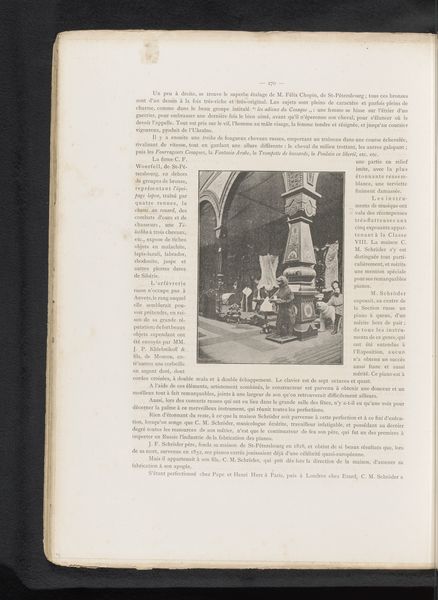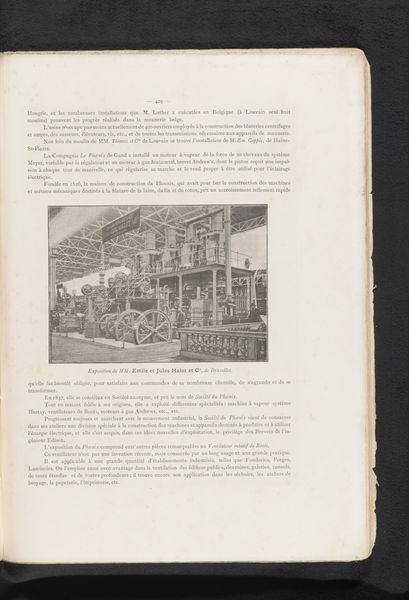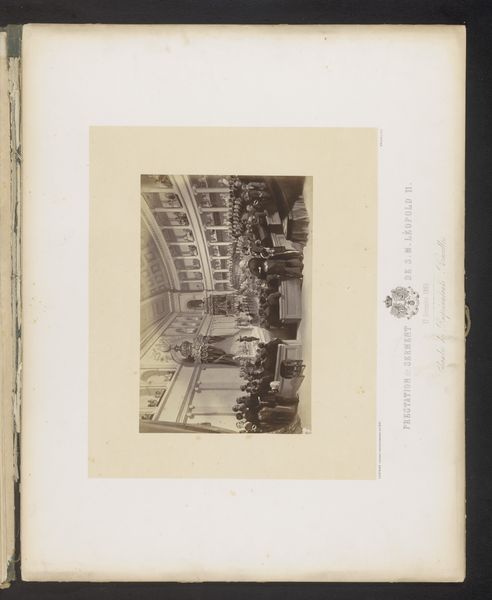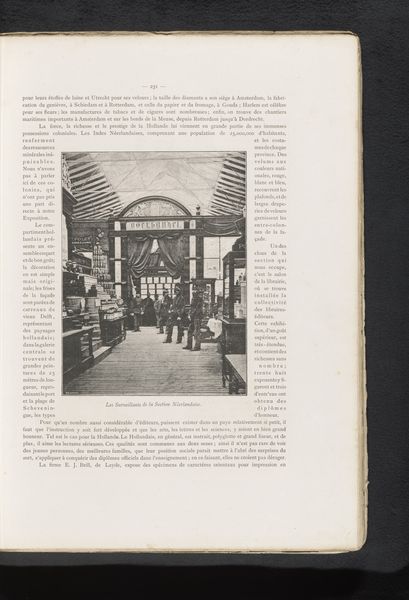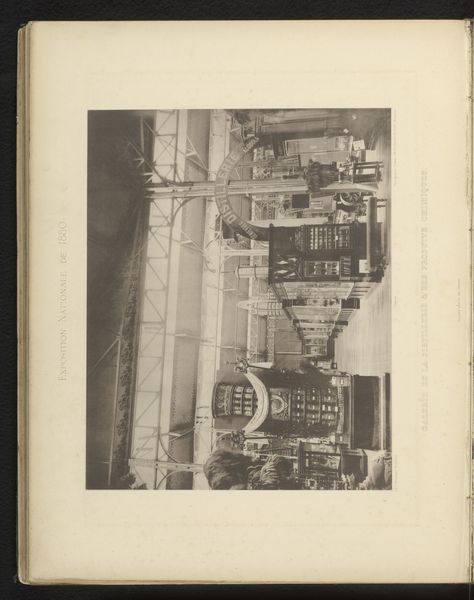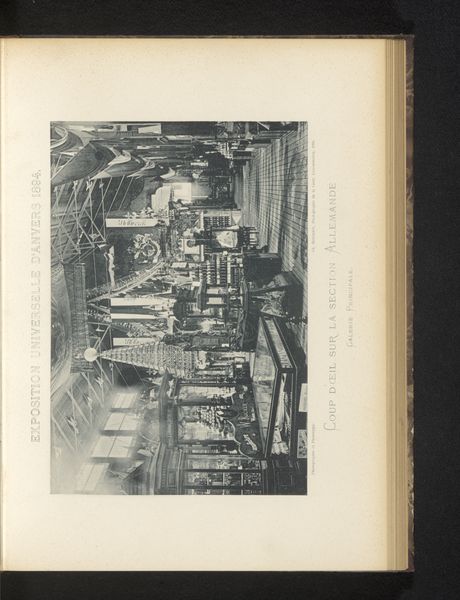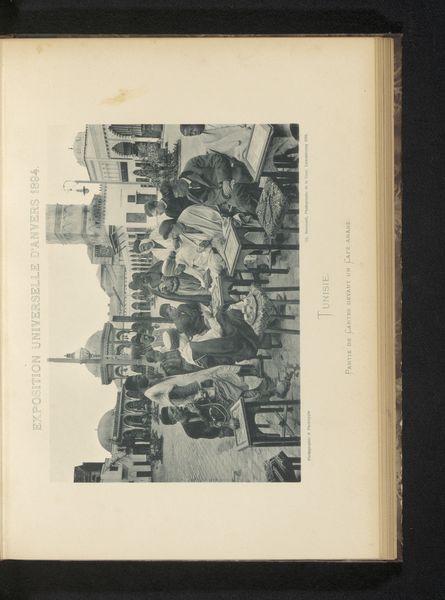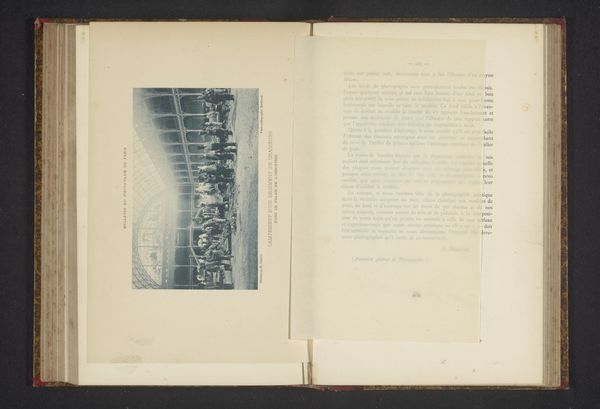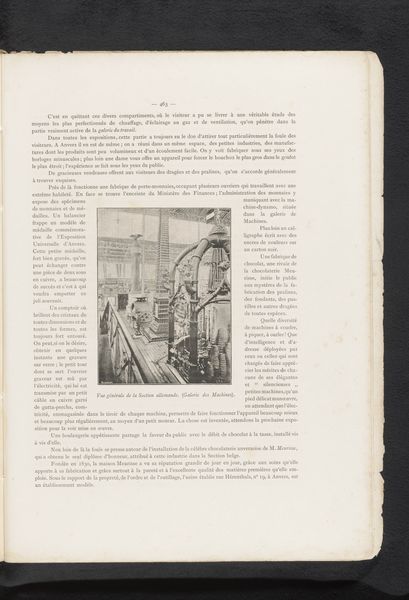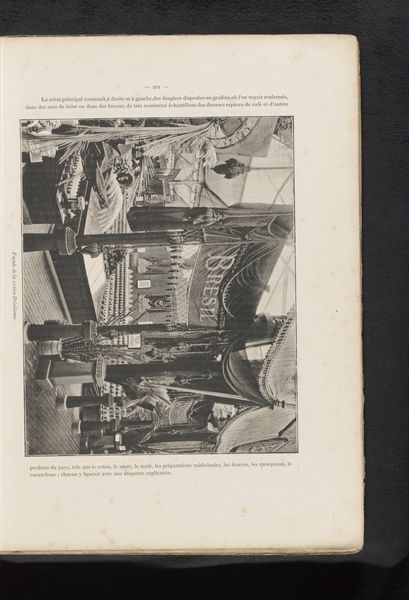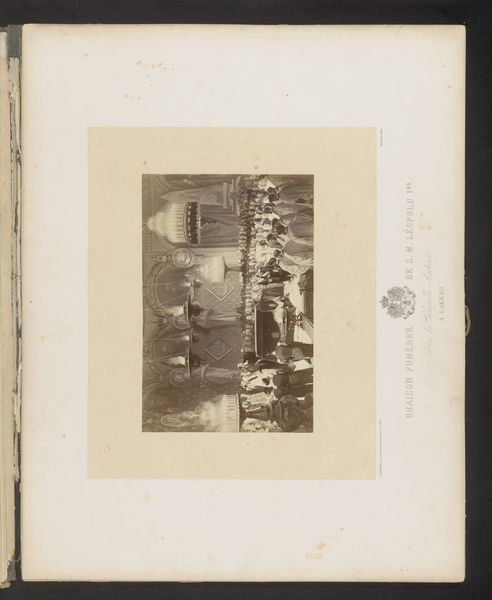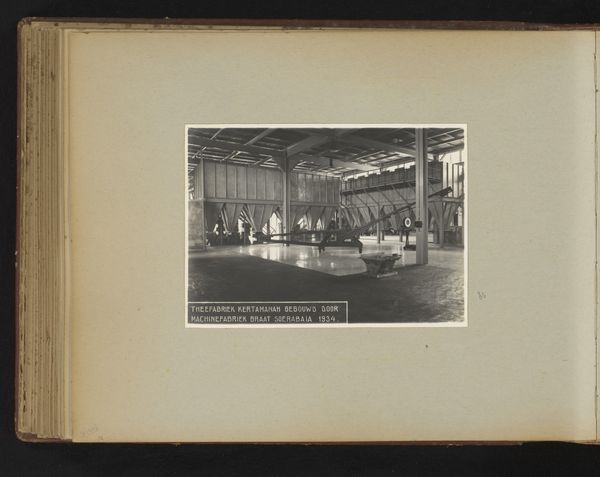
Gezicht op de opstelling van J. Pohlig op de Wereldtentoonstelling van 1885 in Antwerpen before 1885
0:00
0:00
print, photography
#
still-life-photography
# print
#
landscape
#
photography
#
realism
Dimensions: height 224 mm, width 169 mm
Copyright: Rijks Museum: Open Domain
Curator: This compelling print is titled "View of J. Pohlig’s Exhibition at the 1885 World’s Fair in Antwerp." Taken before the actual event, it offers us a glimpse into the industrial landscape of the late 19th century. Editor: It strikes me as austere. The gray tones, the angular machinery, all speak to a certain practicality over aesthetics. It's more a document than a celebration. What sort of products were being showcased? Curator: J. Pohlig was a German company specializing in wire ropes and cable car systems. This exhibit likely highlights their latest innovations in industrial transport, focusing on the materials used in its construction, specifically iron and steel. Notice the complex mechanisms, each painstakingly crafted, designed to hoist materials efficiently and powerfully. Editor: Yes, I’m looking at the labor involved. These pieces were integral to urban expansion and resource extraction during a period defined by rampant industrialization and expanding imperial pursuits, weren't they? Were these ropes and cable cars used in Belgian colonies too? What impact did Pohlig’s production methods have on the workers who crafted these complex parts, and the environment which gave forth raw materials? Curator: It's certainly worth exploring the connection between Pohlig's work and broader socio-political trends. World's Fairs themselves were sites for countries to show off economic and military prowess, using displays like these to emphasize national progress and modernity. Editor: The presence of the company name writ large above all else serves almost as propaganda; emphasizing commerce alongside new methods of production at the heart of Belgium’s expansion as an industrial power. These images not only highlight industry itself but contribute towards the idea that this period of progress will continue onward through new markets and resource exploitation for Europe. Curator: Absolutely. Consider how these images promoted the social license to industrialize; it became part of how progress was perceived. Editor: The world of resource use, consumption and extraction. Food for thought! Curator: Indeed! I find it compelling how this pre-event photograph captured a specific moment, revealing the relationship between innovation, industry, and societal aspirations at a turning point in history.
Comments
No comments
Be the first to comment and join the conversation on the ultimate creative platform.
